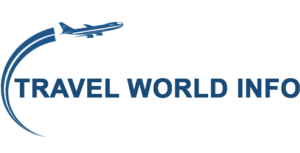In the world of finance, few issues strike as much fear into the hearts of business owners as the phantoms of counterfeit money. It’s a silent enemy, lurking behind a customer’s seemingly innocent transaction, poised to undermine the hard-earned profits of small businesses and trust in financial transactions. The rise of sophisticated printing technologies and digital manipulations of currency images has made detecting counterfeits an increasingly challenging task for businesses and financial institutions alike. For small business owners, the threat of counterfeit money is more than just a financial loss; it can lead to significant damage to reputation and, in some cases, legal entanglements. Retailers, restaurateurs, and others at the frontline of consumer interactions must be equipped with the knowledge and tools to protect themselves from this insidious threat.
This guide aims to arm small business owners and financial institutions with strategies to combat counterfeit money effectively. By understanding the nature of counterfeit currency, its impact on business, and the measures to protect against it, stakeholders in the financial ecosystem can unify in the fight against fraudulent currencies.
Understanding Counterfeit Money for Sale
The Production Process
Counterfeit money, colloquially known as “forged notes,” is usually produced with the goal of emulating the appearance and tactile features of genuine currency. The process involves highly detailed printing techniques that sometimes require the use of equipment as advanced as that used by legitimate government mints. Modern counterfeiters may also employ techniques such as digital image editing and high-resolution printing to recreate currency designs with alarming accuracy. To get undetectable counterfeit money for sale visit the website: https://www.authenticworldwidenotes.com/
Detecting Counterfeit Notes
Fortunately, central banks and governments around the world incorporate a range of security features into their banknotes to deter counterfeit endeavors and to assist business owners in detecting false currency. Some of the common security features include watermarks, security threads, color-shifting inks, and microprinting. Each of these elements serves as a unique identifier that can be checked against a reference to confirm the authenticity of a note.
Impact of Counterfeit Money on Small Businesses
Risks of Accepting Counterfeit Currency
The immediate risk for businesses that unknowingly accept counterfeit money is clear; it represents a direct financial loss equivalent to the face value of the fake note. However, the implications can run deeper. Counterfeit incidents can lead to disruption of operations, loss of goods or services, and even instances of fraud that can leave businesses vulnerable and less profitable.
Legal Implications and Losses
Furthermore, businesses that pass counterfeit currency inadvertently may face legal consequences, including investigation and potential involvement in criminal proceedings. In cases where counterfeit money is detected, businesses typically will not be reimbursed, leading to uncompensated losses that can impact the viability of the operation.
Protecting Your Business
Employee Training on Detection
The adage “knowledge is power” holds particularly true when it comes to detecting counterfeit money. By providing comprehensive training on the features of genuine currency, businesses can empower their employees to be the first line of defense against counterfeits. Training should be conducted regularly to ensure staff are familiar with the latest currency designs and security features.
Investing in Detection Technology
For businesses with high volumes of cash transactions, investing in specialized counterfeit detection technology can significantly reduce the risk of accepting fake notes. Tools such as UV lamps, bill scanners, and even specialized counterfeit detection pens can quickly and reliably verify the authenticity of currency, providing peace of mind and a clear process for screening incoming payments.
Collaboration with Financial Institutions
Reporting Counterfeit Incidents
In the event that counterfeit money is discovered, prompt reporting to the relevant authorities and financial institutions is critical. It allows for the gathering of intelligence and can prevent the circulation of additional counterfeit notes, protecting both the business and the broader economy.
Mitigating Risks with Banks
Small business owners should maintain strong relationships with their financial institutions. Banks can offer valuable guidance on counterfeit detection and may also provide support in verifying cash deposits. Some banks also offer training and resources to help businesses in the fight against counterfeit money.
Educating Retailers and Consumers
Spreading Awareness
Awareness campaigns can be an effective tool in the fight against counterfeit money. By promoting information on the latest counterfeit trends and educating retailers and consumers on detection methods, the financial community can create a network of vigilant stakeholders dedicated to weeding out counterfeit currency.
Tips for Spotting Counterfeits
Simple measures, such as ensuring proper lighting and using the “touch, tilt, look” method to check for security features, can aid in identifying counterfeit notes. Educating retailers and consumers on these techniques can lead to a collective effort in safeguarding the integrity of financial transactions. But some vendors are offering undetectable fake money. Among them, Authentic Worldwide Notes is a famous one. Click here to visit them.
Conclusion
The prevalence of counterfeit money poses a serious challenge to the financial security of small businesses. By understanding the nature of counterfeit currency, recognizing its impact, and taking proactive measures to protect against it, businesses can significantly reduce their vulnerability to this threat. The collaborative efforts of stakeholders across the financial ecosystem, coupled with continuous education and investment into counterfeit detection technology, can create a robust defense against the counterfeiters’ onslaught. Small business owners and financial institutions must remain vigilant and committed to these efforts to maintain the sanctity of legitimate financial transactions and protect the economic interests of all.





















